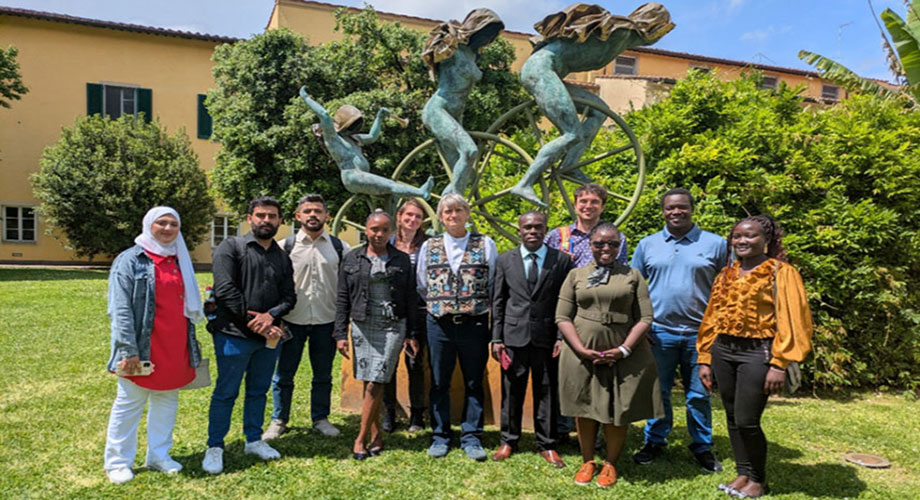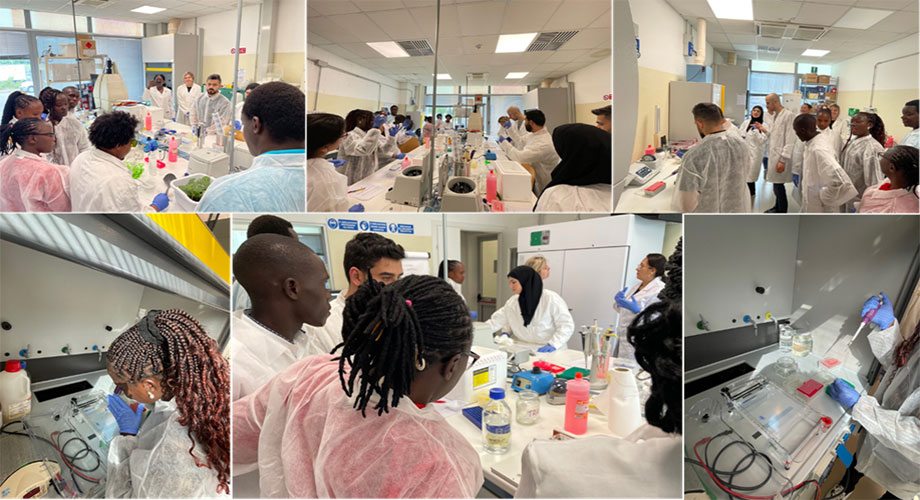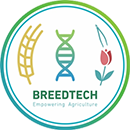Training for Student
1ST STUDENT TRAINING WORKSHOP UNDER THE BUILDING CAPACITY IN PLANT BREEDING AND BIOTECHNOLOGY EDUCATION AND RESEARCH THROUGH PARTNERSHIP PROGRAM IN AFRICA, THE MIDDLE EAST, AND EUROPE FOR AGRICULTURAL TRANSFORMATION (BREEDTECH) INITIATIVE
1. INTRODUCTION
2. TRAINING COURSE
Day 1: Fundamental Principles of Genetics and Molecular Biology
The first day of the training workshop began with an introductory roundtable session designed to set the tone for the days ahead. Participants and trainers introduced themselves, shared their academic or professional backgrounds, and discussed their expectations for the workshop. This session helped establish a sense of community and laid the groundwork for open dialogue and collaborative learning throughout the training.
The morning lecture sessions focused on fundamental principles of genetics, structured into three thematic parts to progressively build participants’ understanding: i) the uniqueness of the genetic approach, ii) the relationship between genotype and phenotype, the molecular role of DNA, and iii) the application of genetic markers and maps. In the afternoon, the focus shifted to practical preparations. A lecture introduced the principles and workflow of DNA extraction and PCR, highlighting key techniques, challenges, and the importance of accuracy. The session also included a comprehensive orientation on laboratory safety, ensuring participants were well-prepared for the hands-on sessions to follow.
Day 2: Practical Sessions on Fundamental Molecular Biology Techniques
On the Second day, students engaged in a comprehensive hands-on laboratory session focused on fundamental molecular biology techniques. The day began with sampling leaf material from bean and maize plants, followed by sample preparation using liquid nitrogen, mortars, and pestles. Students then carried out DNA extraction and quantified the DNA using a Nanodrop spectrophotometer. This was followed by setting up PCR reactions, preparing agarose gels, and performing gel electrophoresis to visualize the amplified DNA. The session concluded with a preliminary discussion of the results. The training approach combined brief theoretical introductions with practical activities. Each method was clearly explained before the hands-on exercises to ensure students understood the objectives and procedures. Participants were divided into small groups, each supported by a facilitator who guided them through the tasks and provided individual support where needed.
Student participation was generally strong, with many showing high levels of interest and enthusiasm. However, it was noted that student engagement levels varied perhaps due to different levels of practical experience. In future, the working groups could be organized according to participants’ varying levels of education and practical experience to better address individual learning needs and optimize engagement. Nonetheless, most students demonstrated a solid grasp of the scientific concepts and confidently applied the techniques introduced as showcased by the successful completion of planned activities for the day. The following day, the results were revisited through an interactive discussion session, which encouraged critical thinking and peer learning. Students not only acquired new technical skills but also explored how these could be applied within their own research or areas of interest.
Day 3: Genomics and Transcriptomics
This session aimed to bridge foundational genetic knowledge with advanced technologies, demonstrating how these approaches can be used to unravel complex trait regulation, improve crop performance, and address challenges in agriculture and biotechnology. The lectures on day three provided a comprehensive overview of genomics, covering the basics of the genome, its physical composition, and structure, including the genomes of cell organelles. It explored genomic features such as coding sequences (genes), repeat regions (including tandem and interspersed repeats, with a focus on transposable elements). The second part introduced transcriptomics, emphasizing the importance of coding and non-coding RNAs in the functioning of living organisms. It discussed how dynamic gene expression regulation impacts cell differentiation and phenotypic plasticity, with examples of non-coding RNAs and their significance. The lecture also reviewed the development of techniques for studying the transcriptome, highlighting dominant modern technologies.
The session culminated with PhD students from ISP sharing their current research projects, academic backgrounds, and personal journeys in research. They provided valuable insights into how they selected their research focus, particularly highlighting the use of genomics and related technologies in advancing their studies. Their presentations illustrated practical applications of genomics in addressing real-world scientific questions and showcased strategies for pursuing research goals, inspiring participants through authentic examples of academic and professional growth.
The session used a mix of lectures, videos, presentations, student questions, and open discussions between presenters and students. About half of the students participated actively, with many questions, especially on transposable elements and the case studies presented by PhD students. They asked insightful questions, showing interest and understanding of the lecture content. However, the animated videos on sequencing techniques were less successful, with some students expressing difficulty in following them. It was suggested that explaining via whiteboard could allow for better interaction.
Day 4: Hands-On Genome-Wide Association Analysis using TASSEL Software
The fourth day of the training was dedicated to building a comprehensive understanding of trait and genotype association analysis. The session began with an in-depth overview of the theoretical foundations and biological relevance of identifying genetic markers linked to phenotypic traits. This background was followed by clear and intuitive explanations of key methodologies, particularly Genome-Wide Association Studies (GWAS) and Quantitative Trait Loci (QTL) mapping. These concepts laid the foundation for a practical, hands-on segment using the TASSEL software platform. The training walked participants through a full association mapping workflow. This included the installation of the TASSEL software, quality control checks for genotype data, and relatedness analyses using kinship matrices, principal component analysis (PCA), and multidimensional scaling (MDS). The session culminated in performing GWAS using TASSEL.
The training employed a blended teaching approach. Theoretical sessions were delivered through visually rich tutorials that used diagrams and graphics to explain complex concepts. These were complemented by live, step-by-step demonstrations that helped participants gain confidence in using the software.
Participant engagement was high throughout the session. Enthusiastic involvement was particularly evident during the installation and GWAS exercises, with trainees frequently seeking clarification and guidance. Master’s and PhD students found the content especially relevant and accessible, as demonstrated by their active participation during the question-and-answer sessions. Many were able to connect the material directly to their own research projects, showing a strong intent to apply what they had learned.
Undergraduate participants, however, appeared to find some of the advanced content more challenging, which was reflected in their more reserved participation. The varied academic backgrounds of the trainees resulted in different learning speeds and levels of comprehension. Trainers had to make an extra effort to ensure that all participants, regardless of prior knowledge, could keep up with the exercises and achieve the core learning objectives.
By the end of the day, most participants had acquired a solid foundational understanding of genotype-trait association analysis and felt confident in navigating the TASSEL interface to carry out basic GWAS analyses. The session not only improved technical skills but also sparked interest in applying these methods to ongoing and future research projects.
Day 5: Advanced genetic tools for plant breeding
The final day of the training focused on advanced genetic tools for plant breeding, specifically Genome-Wide Association Studies (GWAS), genomic prediction, and genome editing. Building on day 4, the session aimed to deepen understanding of how these genomic techniques can improve crop traits and productivity, particularly for smallholder farmers in developing economies. The day included a blend of lectures, discussions, and real-world case studies to connect theory with practical applications. This approach allowed participants to engage with both the scientific principles and the practical use of these technologies in breeding programs. Active participant engagement fostered a collaborative learning environment, enhancing the relevance of the content.
Key outcomes included discussions on improving genomic prediction accuracy through advanced statistical models and integrating participatory variety selection data. Participants also explored CRISPR-Cas systems for genome editing, learning about its mechanisms, applications, and ethical considerations. Case studies demonstrated the successful use of these technologies to improve crop resilience and productivity.
In conclusion, day five equipped participants with both theoretical insights and practical tools to apply modern genomic techniques in plant breeding, emphasizing their role in enhancing global food security while remaining accessible for smallholder farmers.
3. CONCLUSION



